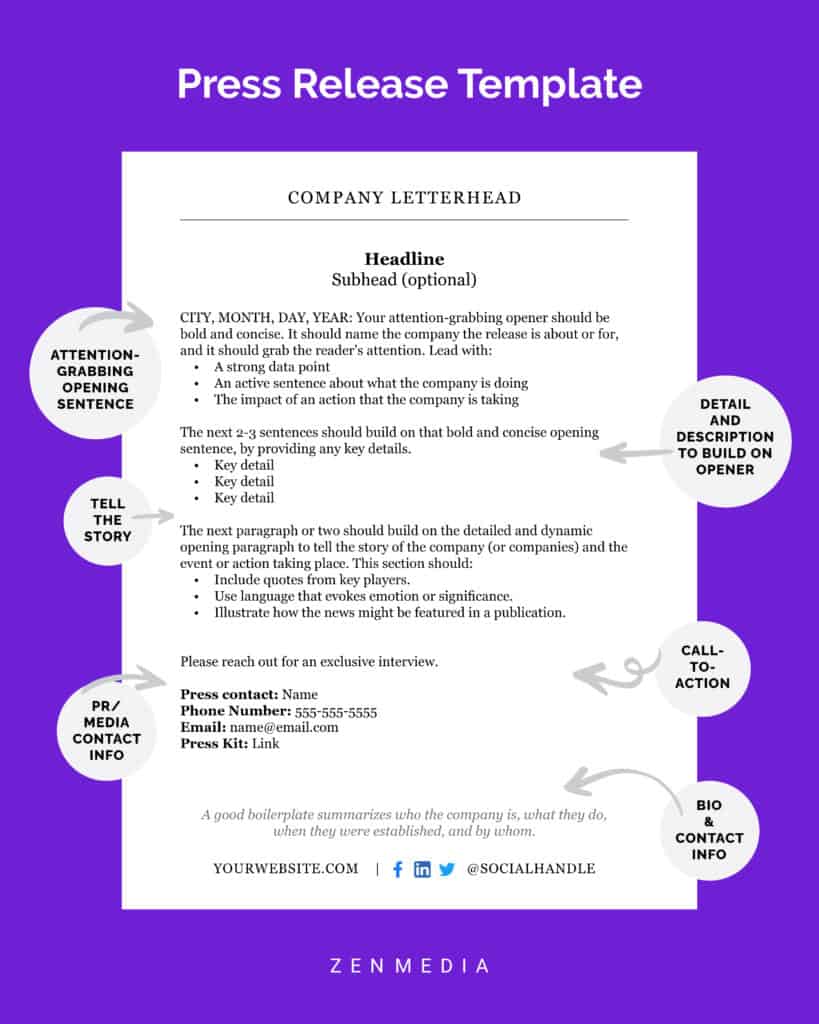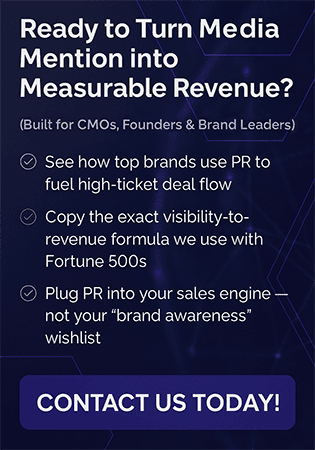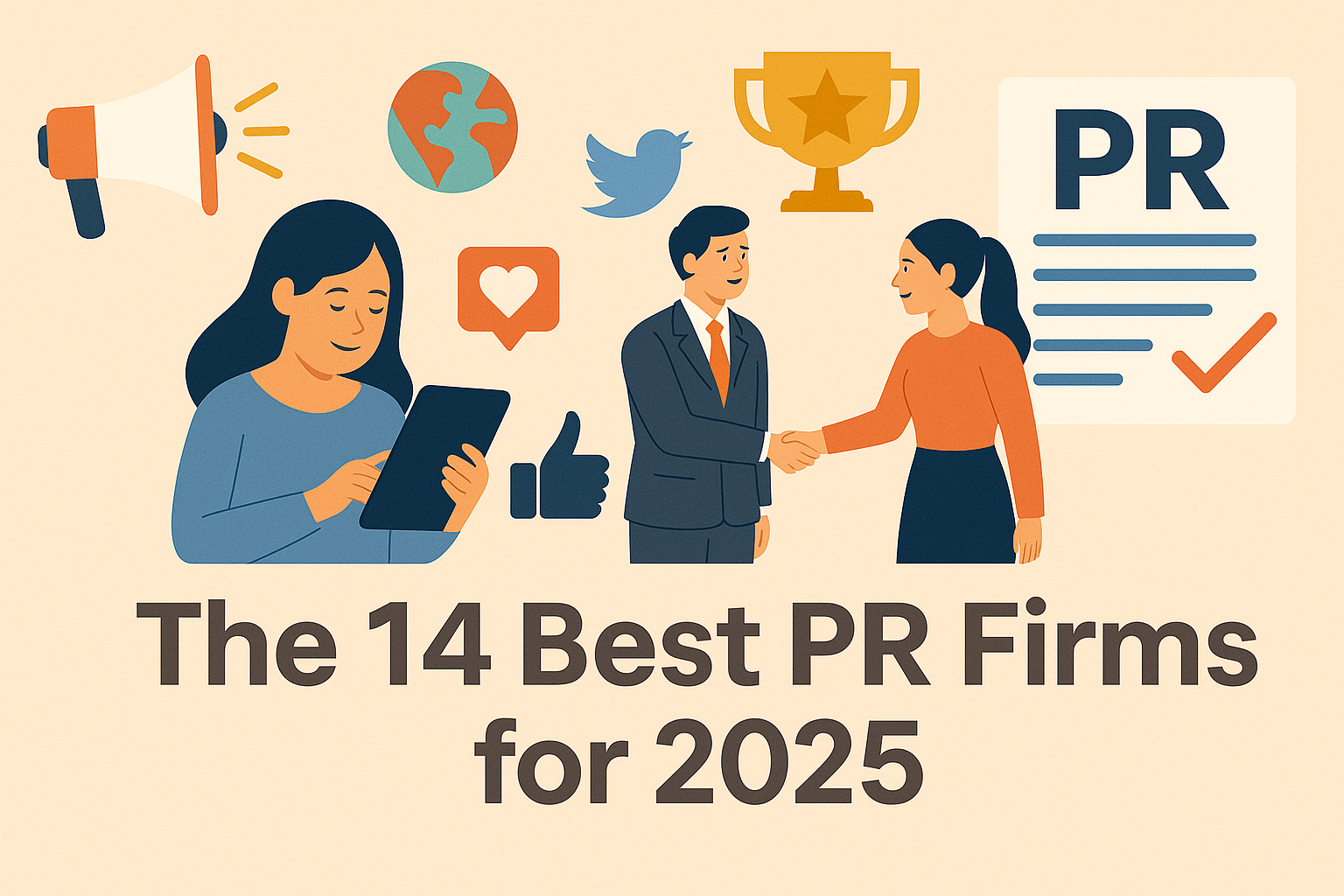So you scored a new funding opportunity. Or maybe your company has a new CEO. Or you’ve just released the latest groundbreaking annual report for your industry. Congrats! But the response is…meh.
When the currency is attention, you need to earn it. (They don’t call it earned media for nothin’.)
Writing a press release can seem like it’s all about you. Your company is the star, isn’t it? But taking that approach won’t get you far because everyone reading your release wants to know why they should care—what’s in it for them? What is the golden ticket that the editor, and therefore, the reader will find in your news that they won’t find elsewhere?
Ready to try a new approach to writing press releases? Here are five tips to take your press releases from asleep at the wheel to full speed ahead.
1. Write an attention-grabbing headline.
Complex, wordy headlines may seem like a great idea. Stuffing your headlines with all the important details should be the best way to garner attention, right? Wrong. Including more than necessary is going to land your press release in the trash bin. If it isn’t clear and concise, journalists won’t spend time trying to decipher what you mean. They will move on to something more quickly palatable.
In this example of a bad headline that our CEO Shama Hyder discussed in her newsletter, we can see exactly what wordiness does to a headline:
“XYZ LLC. Prepays $916,555 of Note Principal Using Free Cash Flow From Operations, Leaving Only $1,833,555 of Secured Debt.”
Did your eyes glaze over? Ours did.
Not only is it wordy and full of business jargon, but it also buries the lede—journalistic jargon for not emphasizing the most important point. The lede here being that XYZ LLC’s key to success is reinvesting profits to pay down one-third of its debt. Now that may be newsworthy for the right business reporter.
As a base, press release headlines should include the name (or names) of the company(ies) that the release is about and a basic description of what newsworthy action the company is taking. Include significant details, but don’t go over the top. Ideally, 80 characters or fewer is all you need for an impactful, clear headline. You want to leave the target interested, but also give them a reason to keep reading.

2. Get to the point.
Your lede sentence and first paragraph should be bold and concise. Your first sentence should mimic the headline, including the company’s name and a short, active description of the newsworthy action.
The point you make in your press release should answer the question: What’s in it for them? The readers, the journalists, the municipality—whatever community your press release is newsworthy for. Lead with one of the following:
- A strong data point: 85% of employees are ready to quit—According to the report released by COMPANY NAME this morning. This startling fact….
- A strong and active sentence about what the company is doing: COMPANY NAME broke ground on the world’s largest XYZ facility last year, and next week this ground-breaking facility will be open to the public.
- The impact of an action that the company is taking: 7,000 Students in XYZ location will get free school lunch thanks to COMPANY NAME. CEO NAME has pledged to donate $XXXXX to the XYZ school district as part of their new charity initiative.
In the first few sentences after the lede, add detail and description to build on the opener. Key details could include:
- If the PR is about securing a round of funding: Who is providing the funding? How much funding is it? How much funding have they received previously? And what will the funding go toward?
- If the PR is about opening a new location: How many other locations does the company have? Is there anything unique about this location? What will take place at the location? How many employees will work there?
- If the PR is about a partnership between two companies: What does each company do, and how will those efforts be used in the partnership? What is the aim of the partnership? What is the expected outcome? Who is heading up the relationship?
3. Support your story with numbers, statistics, research, and quotes.
In the following paragraphs, tell the story. Write a narrative that will engage the reader. Use striking statistics and colorful quotes that will help paint the picture for reporters. The clearer—and more compelling—that picture is, the more likely it is that you’ll get the coverage you seek.
Use this space (one to two paragraphs) to build on the detailed and dynamic opening paragraph and tell the story of the company (or companies) and the event or activity taking place. To support your narrative, you can include third-party research or studies. Proving what you say is true with outside sources will make your claims (and your story) more appealing to a reporter. This section should:
- Include quotes from key players: CEO, company president, or other decision-maker involved with the event or action
- Use language that evokes emotion or significance:
- COMPANY NAME is excited to usher in this new era of…;
- Distraught over the economic implications of the last two years, COMPANY NAME is empowered to…;
- This first-ever opportunity will enable…
- Illustrate how the company’s news might be featured in a publication:
- COMPANY NAME’s announcement will send a shock wave through XYZ industries, completely reshaping…;
- Companies and consumers alike will be compelled to learn more about how this new technology will impact their everyday functions…;
- This initiative is a response to XYZ major trend that is dominating the news—proving that…
Related read: How To Make Boring Company News Into a Press-Worthy Story
4. Have a clear CTA.
All good CTAs need to be persuasive, create a sense of urgency, and be low-risk, high-reward endeavors. In a press release, a CTA can be a standalone sentence or the last sentence in the last paragraph of the release. Your CTA should tell the reader what you want them to do. For example:
- Contact our team for early access to our new job site.
- For an exclusive early-access demo of our new product, contact us today.
- For additional details and commentary, please reach out.
5. Ensure you include your contact info.
This might seem obvious, especially if you are sending press releases directly to a journalist. They have your email, right? That should be enough?
It’s not.
That journalist may decide it’s not the story for them and forward it (or worse, print it out and hand it) to a colleague. Or it may be delivered to a generic inbox that reporters or editors share for assignments. The writer will likely not know you personally, and with newsroom capacity dwindling, journalists don’t have time to waste searching for contact information. If it isn’t there, they just won’t move forward with the story.
In addition to a company boilerplate—which summarizes who the company is, what they do, when they were established, and by whom—every press release should have PR/media contact info that includes a press contact, phone number, email, and a link to a press kit, if available.
This section should also include the company website, social media handles, and any other relevant information. In other words, make it impossible for the reader or journalist to NOT know how to reach you and the companies involved.
Put your skills to the test with Snooze or News.
After you’ve followed the guidelines in writing a press release, you will want to run it through Snooze or News—the first-of-its-kind AI platform that evaluates press releases to determine their newsworthiness.
Engineered and trained with a combination of the best of generative AI and years of industry experience and intuition from Zen’s own SMEs, Snooze or News reviews the press release that you’ve written, scores it out of 100, and provides you with actionable recommendations and insights. It’s the second set of eyes you’ve always wanted and now you can gain access to them for free today.
This isn’t a simple spelling and grammar correcting tool, it is strategic, forward-“thinking,” and designed for PR professionals like you that are constantly upping their game.
Need help creating killer press releases and handling media coordination? Try Snooze or News today!





